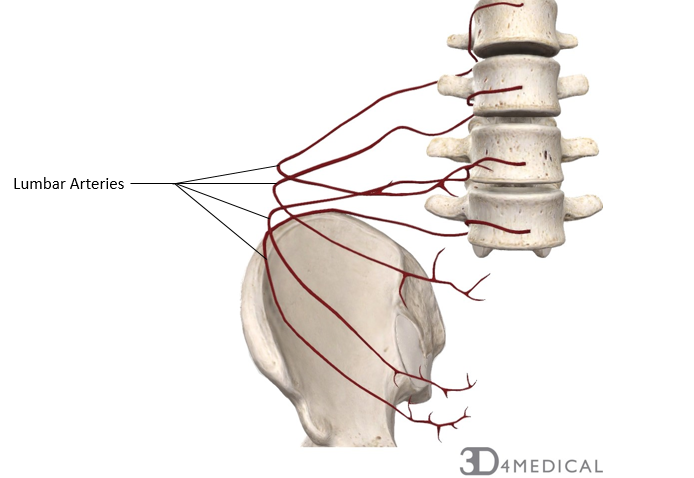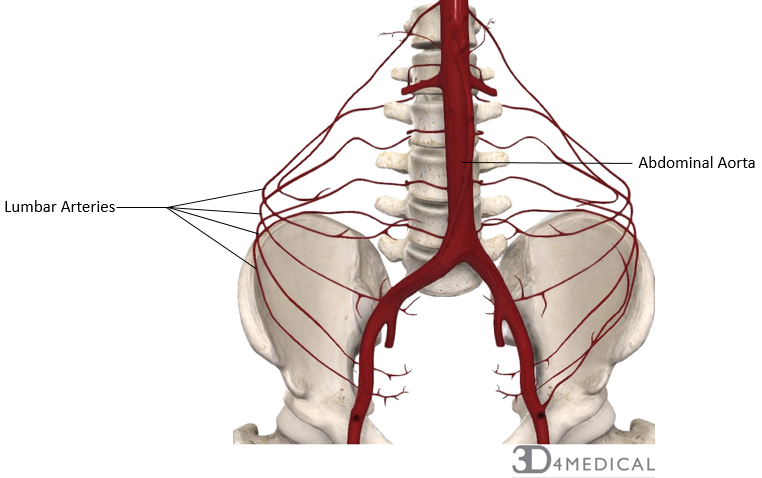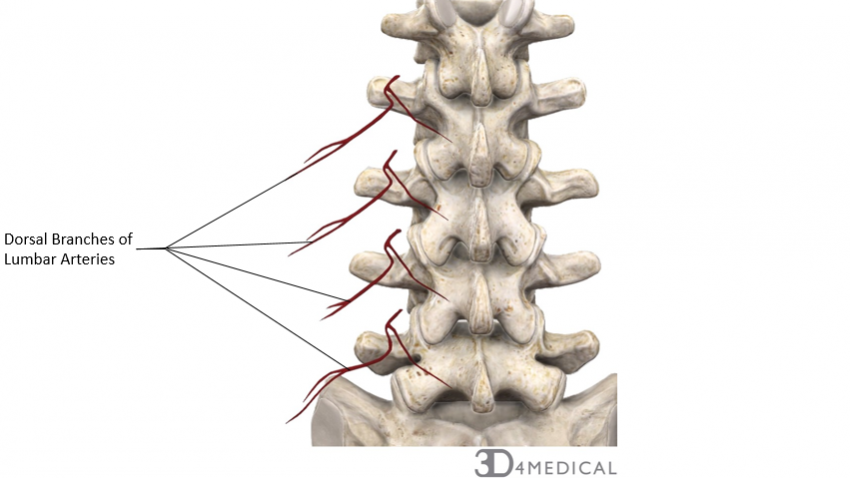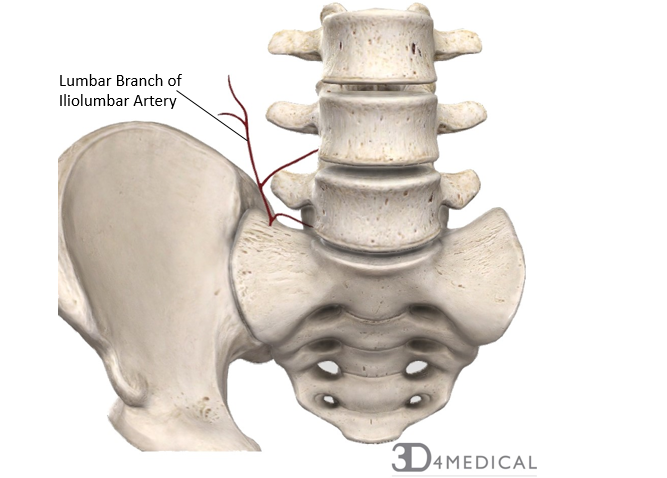Abdomen
Nerves, Blood Vessels and Lymph
POSTERIOR ABDOMEN: LUMBAR REGION
Leaving the heart the blood flows through the arch of the aorta, into the thoracic aorta and into the abdominal aorta. The abdominal aorta is the distal third and final portion of the descending aorta. The abdominal aorta travels inferiorly running along the posterior abdominal wall, as well as the anterior borders for the last thoracic vertebrae to the fourth lumbar vertebra. Once the abdominal aorta has reached the fourth lumbar vertebrae, it divides into two terminal branches. These two terminal branches are the right and left common arteries. Branching off of the abdominal aorta, there are four pairs of lumbar arteries. Some people actually have five pairs of lumbar arteries branching off of their abdominal aorta. The left lumbar arteries originate on the left posterolateral surface of the abdominal aorta, while the right originate on the right posterolateral surface. The right and left lumbar arteries provide the arterial supply to the right and left posterior and anterior parts of the abdominal wall as well as a number of muscles and overlying skin. Some of the muscles that have an arterial supply from the lumbar arteries are: quadratus lumborum, psoas minor, and psoas major. The lumbar arteries also help to supply blood to the overlying skin of these muscles.
Branching off of the lumbar arteries are four pairs of dorsal branches. The dorsal branches originate from the corresponding lumbar arteries, for example, L2 dorsal branches off of the L2 lumbar artery. The dorsal branches then, run along the posterior abdominal wall. The dorsal branches of the lumbar arteries help supply blood to both the left and right aspects of the lower back as well as the spinal cord, vertebral column and the skin of the back. Some of the muscles that are found in the lumbar region that are supplied by the dorsal branches of the lumbar arteries are: lumbar intertransversarii, interspinales lumborum, longissimus thoracic, ileocostalis lumborum and latissimus dorsi.
Another artery branch to make note of, is the lumbar branch of the iliolumbar artery. The lumbar branch is one of the two branches of the iliolumbar artery, the other being the iliac branch. The lumbar branch originates along the posterior and medial surface of the psoas muscle and travels superiorly and laterally to the lower lumbar of the vertebral column. On the lumbar branch, there is a spinal branch that goes to the intervertebral foramen between the fifth lumbar vertebrae and the sacrum. This artery provides a blood supply to psoas major, quadratus lumborum, the fifth vertebrae and the sacrum.
The veins found in the lumbar region are similar to the arteries. There are four, or sometimes even five, pairs of lumbar veins that accompany the lumbar arteries. These veins can be found posteriorly and over the muscle, quadratus lumborum, as well as anteriorly between the transverse abdominis and internal oblique muscles. The lumbar veins are responsible for draining the blood from the posterior abdominal wall, muscles and the lumbar vertebral venous plexuses into the ascending lumbar vein, inferior vena cava as well as the iliolumbar vein.
Another important vein to make note of is the ascending lumbar vein. There is a right and left ascending lumber found that in the body. These two veins run on the anterior aspect of the vertebral spine. They arise from the sacral veins and run until they reach the subcostal veins. There is also the iliolumbar vein, which is a side branch of the internal iliac vein. This vein receives its blood from the fourth and fifth lumbar veins and drains into the inferior vena cava.





